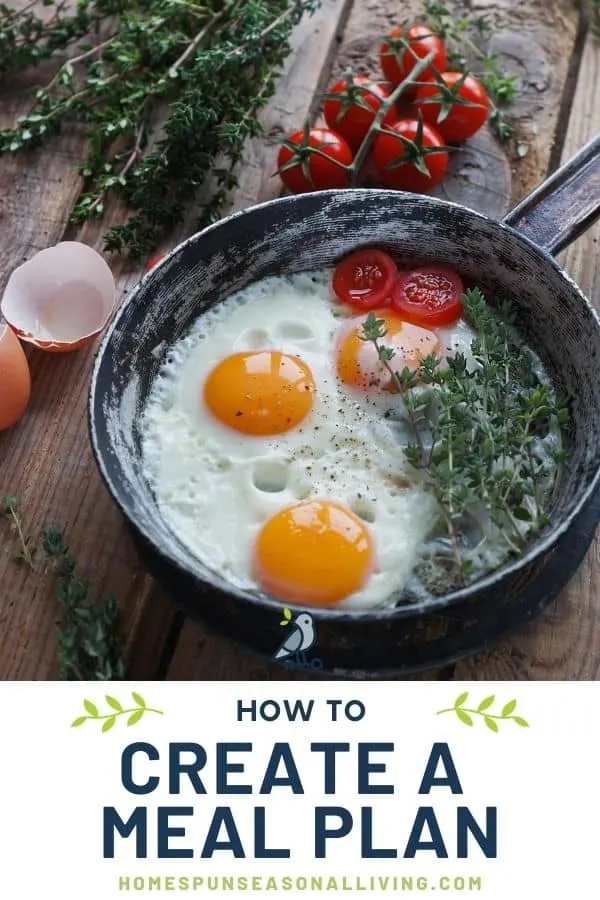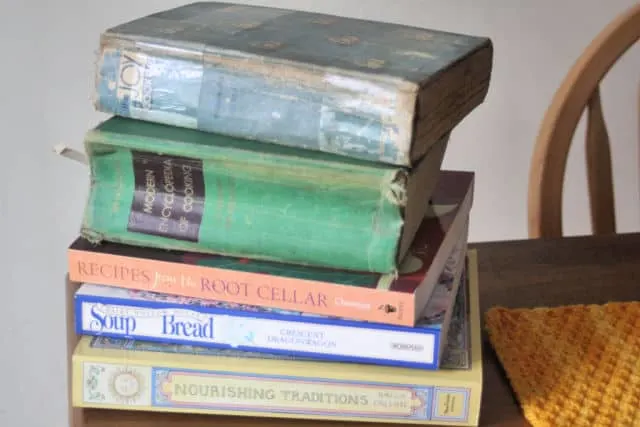We can eat more frugally and healthfully by learning how to make a meal plan for our families.
And not just some expensive meal in a box or some kind of over-the-top, complicated affair – but a plan for actual meals you and your family can enjoy cooking and eating.

Practical Advice
I talked with Karla from The Happy Mustard Seed to get practical, doable advice we can all use when thinking about how to meal plan.
[mailerlite_form form_id=16]Her advice is simple and easy to implement for families of all sizes. It’s also great for beginners while inspiring those of us who’ve been meal planning for a while.
Karla is the creator of a the e-course 30-Day Meal Planning, a step-by-step guide and I just knew she would have so many nuggets of wisdom for us, and boy did she.
You can watch our entire interview here and find all the links and information in the text below.
Not a Collection of Recipes
A meal plan is not this giant collection of recipes in a three ring binder that you clipped from the newspaper or printed from Pinterest.
Those are good and have a place in our lives but can often be a hindrance not a help to actually making a meal plan.
A meal plan is simply list of what you want to cook and eat in a week. It doesn’t have to be complicated or full of fussy ingredients

That list can truly be as simple as roasted chicken with baked potatoes, beans and rice, spaghetti, etc. Stick to old favorites and easy recipes most of the time – sprinkle in the new recipes and ideas you want to try now and then for fun.
Share the Load
Get everyone involved in not just the meal planning but the meal preparation. Many hands make light work, but involvement also helps avoid burnout and limit complaints.
Let everyone suggest meals they’d like to have during a week or over the course of a couple of weeks. This way everyone gets to have a favorite. And it means one person isn’t having to do it all alone in a void of feedback.

Make sure everyone gets involved in the actual cooking now and then, too. Obviously, keep it age appropriate but older children can chop vegetables or even cook entire meals.
Let family members cook their favorite meals and be sure to expand skill sets of children so they’re prepared when they get a house of their own.
Rotate Meals for Ease
Rotation is a giant building block in learning how to make a meal plan and can take on several forms.
A simple rotation can be something like every Monday is a meatless dinner and every Tuesday is some kind of pasta. That kind of rotation makes it easier to deal with what’s currently in season and come up with ideas based on the garden or CSA.
Do include a plan for leftovers. Do make a giant pot of soup and know that you’ll be eating it for 2 nights. Freeze leftovers for quick meals later and use them for lunches as well.

Another rotation can simply be eating the same meals multiple times over the course of the year. If the meal plan for the first week of July can be repeated the first week of August, for example definitely do that rather than plan again.
Huge Variety isn’t Common
It’s easy o think that meal plans are full of huge variety but the truth of the matter is most of home cooks fall into a fairly simple meal routine.
We might eat a lot of tacos or a lot of soup. The ingredients might change up a bit based on seasonality but we use similar and common techniques for ease.
This doesn’t mean we’re eating hamburgers with green beans 6 nights in a row but it does mean we might have tacos every Tuesday night and happily eat that way.
Keep It Organized
Keep your meal plans and recipes organized. A simple three ring binder or journal with lists of everyone’s favorite meals and copies of recipes to try keeps things together and easier when it’s time to create the plan.

Don’t throw away old meal plans. Rather keep them to refer later. This might come in handy next summer when all that zucchini is producing the garden, you can look back and see how you used it up the previous summer.
When Life Happens
The great thing about a meal plan is there is no wondering around thinking about what to eat, the plan is there and you know what to cook.
However, life happens.
If we change our mind and want to eat something different. That’s fine go for it. The meal plan is not ever set in stone, adjust as necessary.
Sometimes chaos happens, if we have to work late or there’s some kind of emergency cooking might not be in the cards. This is where we can pull a leftover meal out of the freezer to reheat or even buy something pre-made from the grocery store or eat out. No shame in either.
